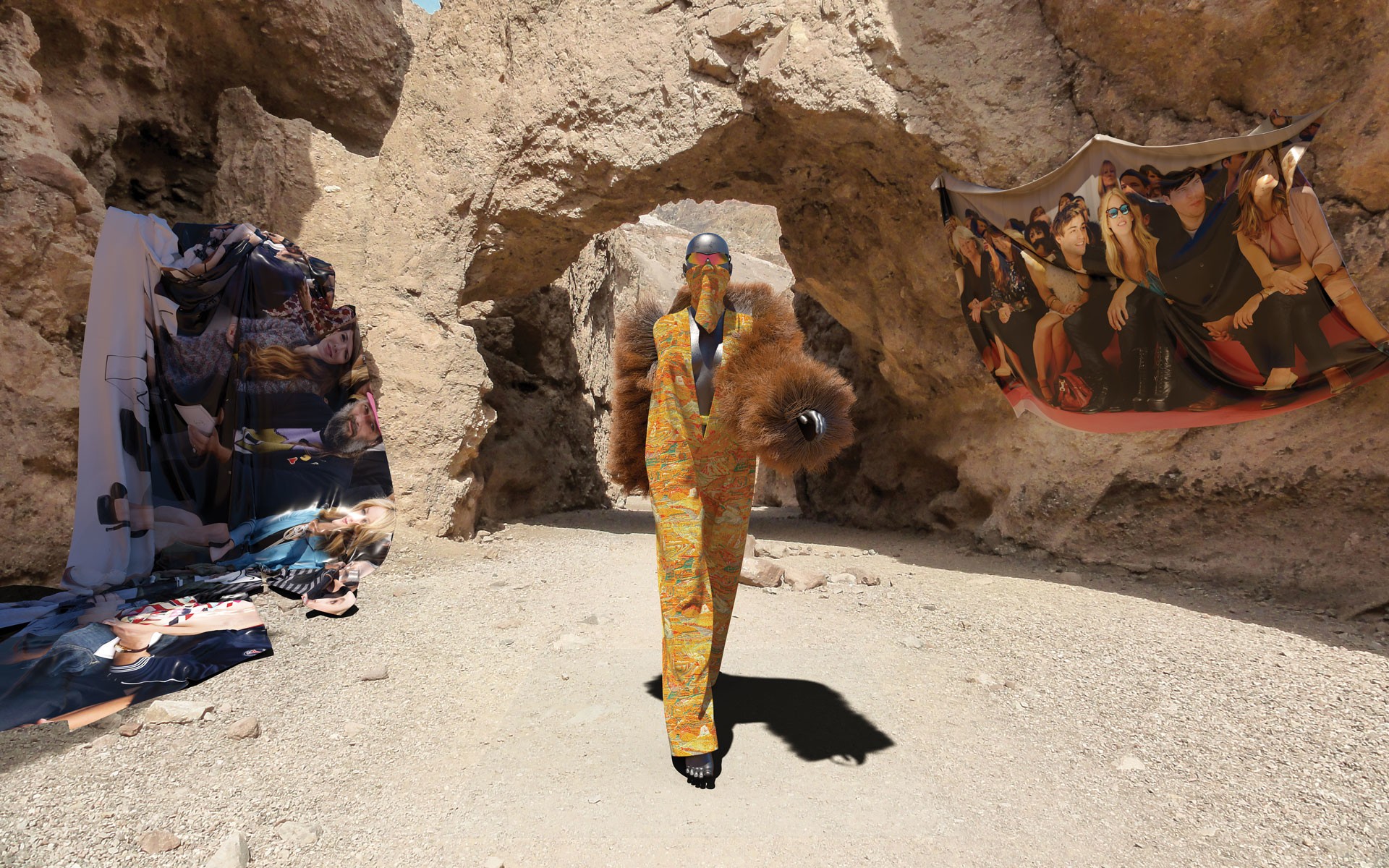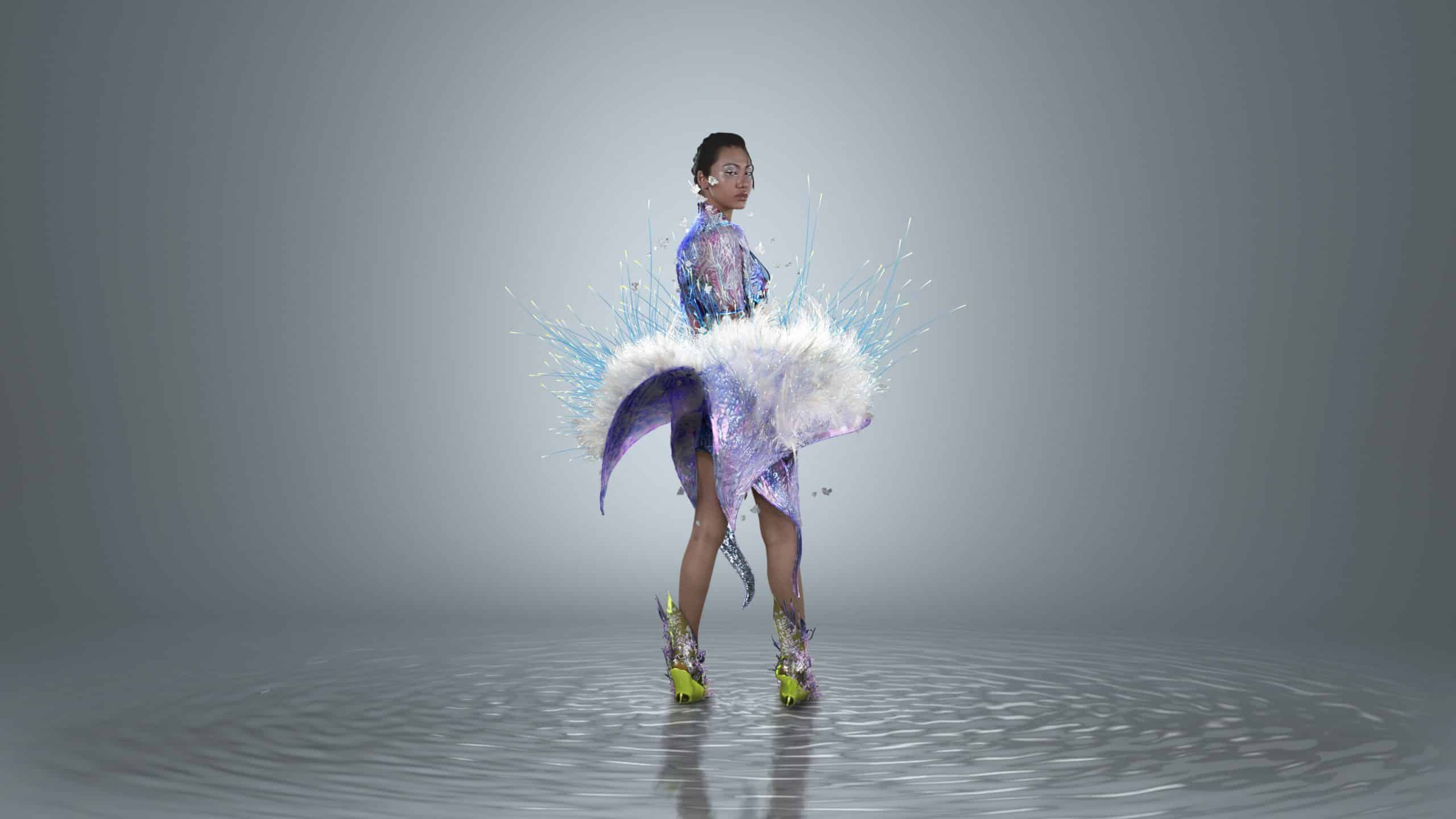Story LIEU CHUONG
Photos INTERNET
On virtual runways, digital designs boldly defy reality and shape the future of fashion.

Battle of the brands
The Metaverse is a platform that promises to build a very “real” society for humans solely online. Many envision a future where we live, shop, work and play solely through screens, using our own avatars as intermediaries. Along the way, digital fashion has become a buzzword attracting significant interest and attention.
Before it picked up its current name, digital fashion emerged in the early 2000s in virtual games, where players could spend money to purchase stylish costumes for their in-game characters. Entering the 2020s, the global outbreak of Covid-19 coincided with the Metaverse frenzy. Many companies began to apply AI technology to create digital fashion designs adapted to real human forms. This entirely new fashion segment quickly became a hot topic and was immediately embraced by renowned fashion brands in their campaigns, revolutionizing the industry.
Balenciaga first introduced its fashion to the virtual world through a Fall/Winter 2021 collection and subsequently collaborated with the game Fortnite to launch the brand’s luxury outfits for players. GUCCI, meanwhile, established its own virtual Gucci Town within Roblox in 2022. The label launched a range of digital handbags, with the Dionysus Bag with Bee fetching a record USD4,115. Adidas partnered with Bored Ape Yacht Club for an NFT project in 2022, unveiling the Virtual Gear collection consisting of 16 designs. Not to be outdone, Nike also secured its place in the NFT world with its first NFT sneaker collection, Cryptokicks, in collaboration with RTFKT.

With the limitless creative potential of digital fashion, young brands with a solid technology foundation such as Replicant, The Fabricant, DressX, Auroboros and Tribute have become sought-after names for fashion enthusiasts. These brands design and sell extremely unique, even otherworldly, clothing items. Customers can virtually try on clothes using their real photos and download images of themselves wearing dazzling, ethereal outfits after paying anywhere from just USD10 to thousands of dollars.
Beyond clothing, fashion brands are also creating a series of their own virtual models, ushering in a vibrant and liberating wave of non-physical fashion. For instance, Balmain’s Virtual Army, launched in 2018, includes three virtual female models – Margot, Shudu and Zhi – representing the diverse beauty and unique allure of Balmain women. Among them, Shudu holds the distinction of being the world’s first digital supermodel, currently boasting around 240,000 followers. These virtual models not only showcase the brand’s stunning outfits (whether virtual or real) but also represent society’s new aesthetic standards, becoming influencers for younger generations.
Future expectations
Faced with the dynamic development of digital fashion, some believe in a future for the global fashion industry where virtual clothes will replace physical garments. Using virtual fashion not only facilitates more accurate and convenient clothing purchases through online try-ons but also contributes to reducing pollution from mass production. However, others argue that while these virtual items may bring temporary excitement, the limitations of technology remain a significant hurdle for digital fashion. Unless a fully operational virtual world in the Metaverse becomes a reality, owning digital fashion items does not offer many practical benefits.

Moreover, skeptics believe that digital fashion alone will not have a significant impact on reducing environmental pollution unless fashion giants proactively replace physical clothing with virtual items or operate both sectors concurrently to maximize revenue and profits. This has been proven over the years, as major fashion brands have rarely implemented radical solutions, only launching temporary campaigns to appease public opinion or promote their brand while continuing mass production.
Nonetheless, one thing is certain: digital fashion evolves daily, remaining a long-term focus for brands even after the Metaverse fever fades. While the journey ahead is long, the value digital fashion offers will maximize when technology matures – leading, its proponents believe, not only to material well-being but even spiritual fulfillment in a technology-shaped world.










